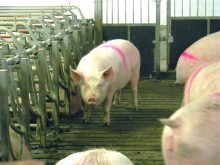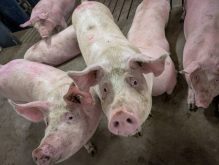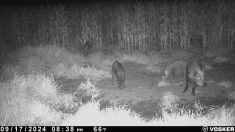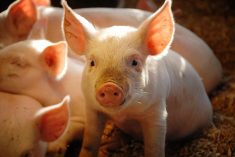With more money in their pockets, millions of Chinese are seeking a richer diet and switching to beef, driving imports to record levels and sending local meat firms abroad to scout for potential acquisition targets among beef farmers and processors.
The need to feed the world’s most populous nation has seen Chinese firms gobble up foreign dairy, sugar and cereal producers, and Shuanghui International’s $4.7-billion bid for top U.S. pork producer Smithfield Foods is just the country’s latest food ‘land grab.’
Beef could be next on the menu as Chinese opt for the protein-rich meat, which is seen as a higher-quality product than pork, the nation’s staple. While pork and poultry remain China’s meats of choice, beef consumption is growing rapidly as hot-pot restaurants, Korean barbecue joints and burger bars set up across the country.
Read Also

Pig transport stress costs pork sector
Popular livestock trailer designs also increase pig stress during transportation, hitting at meat quality, animal welfare and farm profit, Agriculture and Agri-Food Canada researcher says
Chinese consumers are also more wary about cheaper local meat products after a series of recent food safety scandals — from bird flu to rotting pig carcasses in Chinese rivers.
All of which is making imports more affordable — good news for major beef producers such as Australia and New Zealand — and encouraging Chinese firms to look overseas to secure future supplies.
“There are many companies closely following this market and looking for the right time to come in. One of the major reasons is food safety,” said a consultant who advises Chinese agribusinesses.
One state-owned agribusiness firm is in talks with a foreign beef supplier and eyeing future overseas production, he said, asking not to be named because the information is commercially sensitive.
Chongqing Grain Group, a state-owned business that has expanded aggressively overseas in recent years, plans to invest in breeding beef cattle in Australia, its president Hu Junlie said, without giving further details. Tianjin Dawnrun Beef, too, has been buying up rivals to expand its business and is looking to breed cattle in Australia, said a company official.
A struggling industry
China’s beef imports soared in January-April to more than 75,000 tonnes, more than 10 times those in the same year-earlier period, and look set to far outpace initial forecasts. That’s still just a fraction of China’s total consumption of around 5.6 million tonnes a year, but the proportion is set to swell.
“Domestic beef prices are going up faster than the import price,” said Joy Tang, China manager at Meat and Livestock Australia. “The gap is closing.”
Traditionally the domain of China’s Muslim minorities, raising cattle for meat only began to expand in the 1980s, but remains small scale and fragmented.
One of China’s earliest beef processors, Fuhua slaughters 30,000 head of cattle a year, with about a quarter of those raised on its own farm. Its Chinese Yellow-Swiss Simmental crossbred bullocks are reared in stalls on farmland that once supplied Chinese emperors, but is now overlooked by high-rise apartments — a sign of the capital’s spreading urban sprawl that is rapidly swallowing up agricultural land and pushing up farmers’ costs.
“Farmers aren’t breeding anymore. It gives poor returns and they prefer to move to cities to work where they can earn 100 yuan ($16.30) a day, while a cow only earns them 3,000 yuan a year,” said Fuhua sales manager Liu Chunsheng.
“The beef market is very scattered. There’s not a single big company,” Liu added. “It’s to do with capital. This year everyone’s losing money. Live cattle are expensive and imports are cheap. It’s quite simple.”
China currently only allows beef imports from Australia, New Zealand, Argentina, Uruguay and Costa Rica, but recently added four Canadian firms to its list of approved exporters. It has also signed a framework deal with India to import buffalo meat.
For now, the Chinese eat just four to five kg of beef per head each year, around a fifth of the global average.
“Chinese knowledge about beef is still very low. We’re teaching butchers how to cut the meat and consumers how to appreciate a good steak,” said Tang at Meat and Livestock Australia.


















